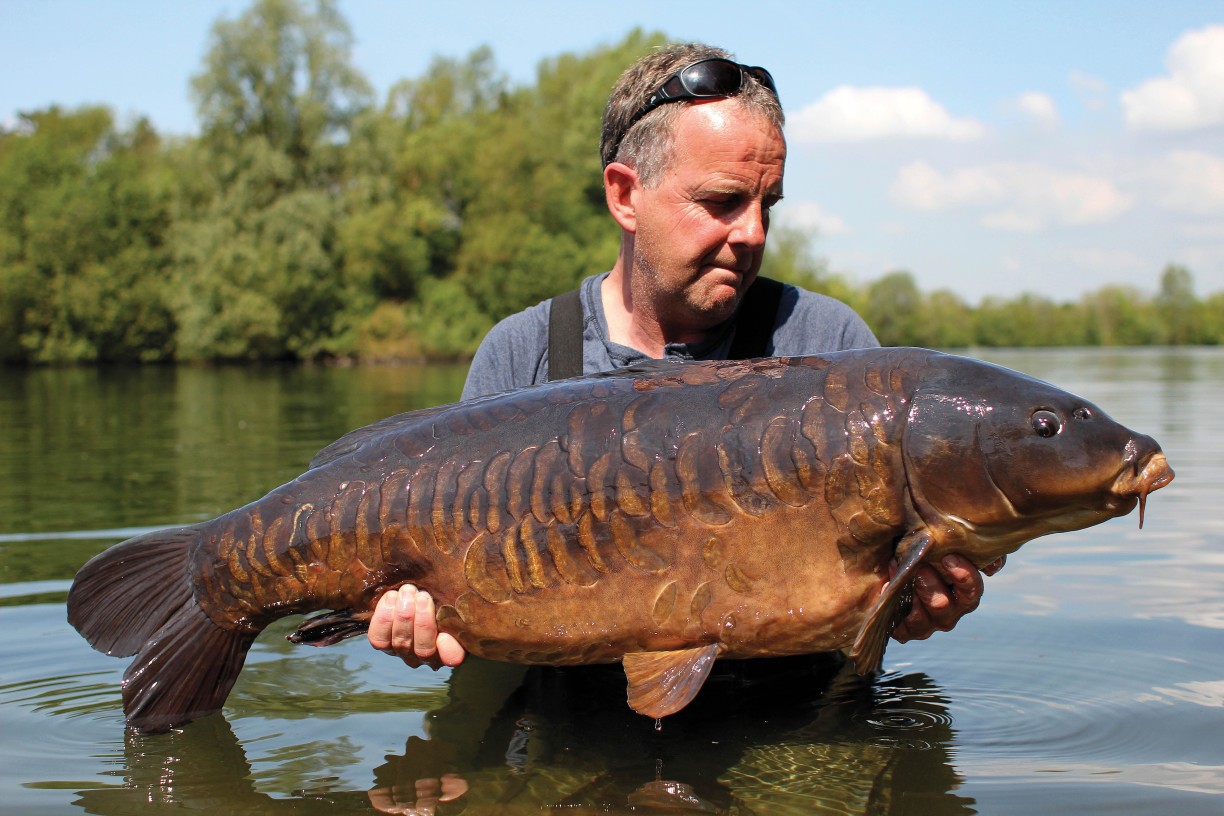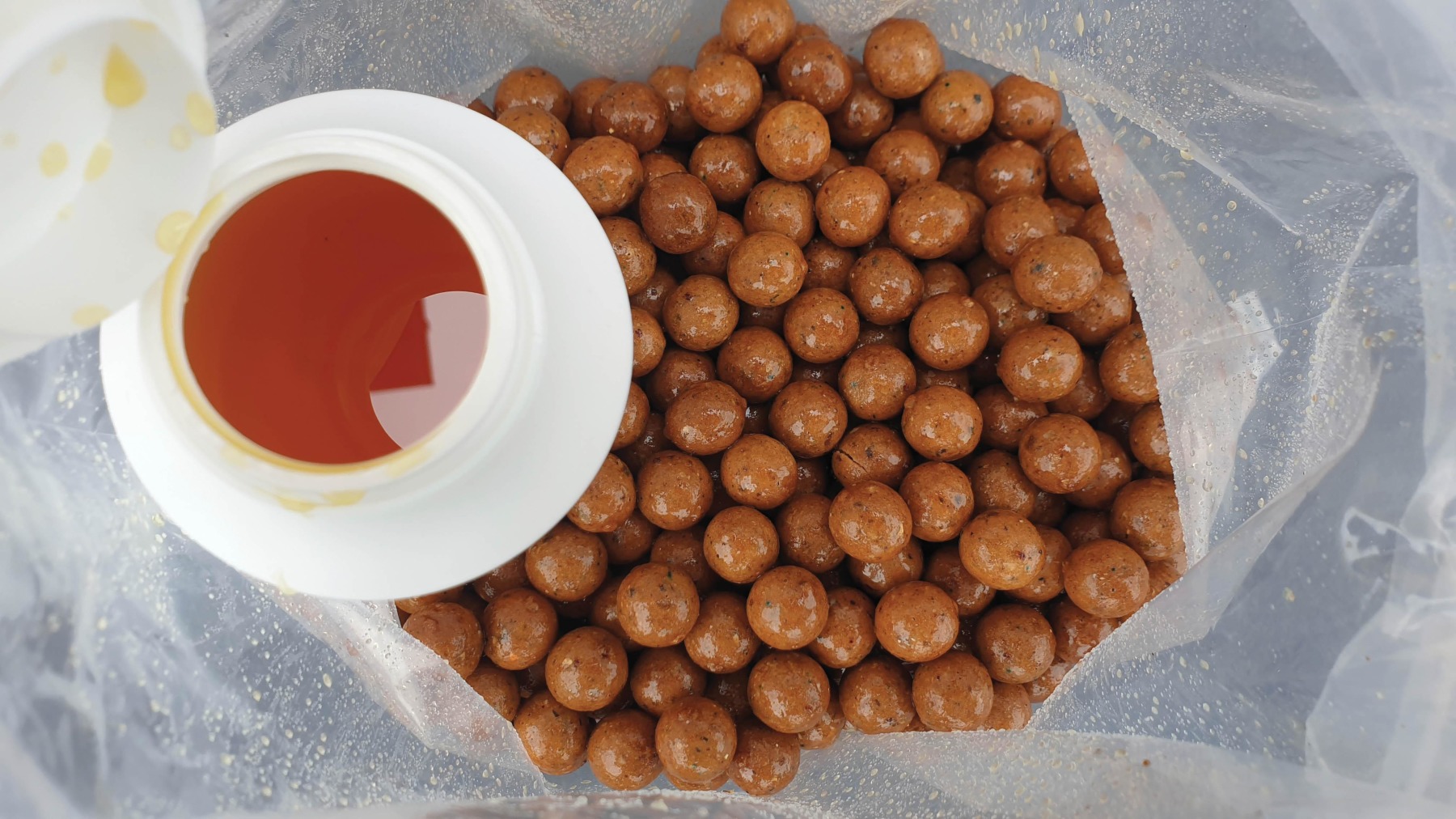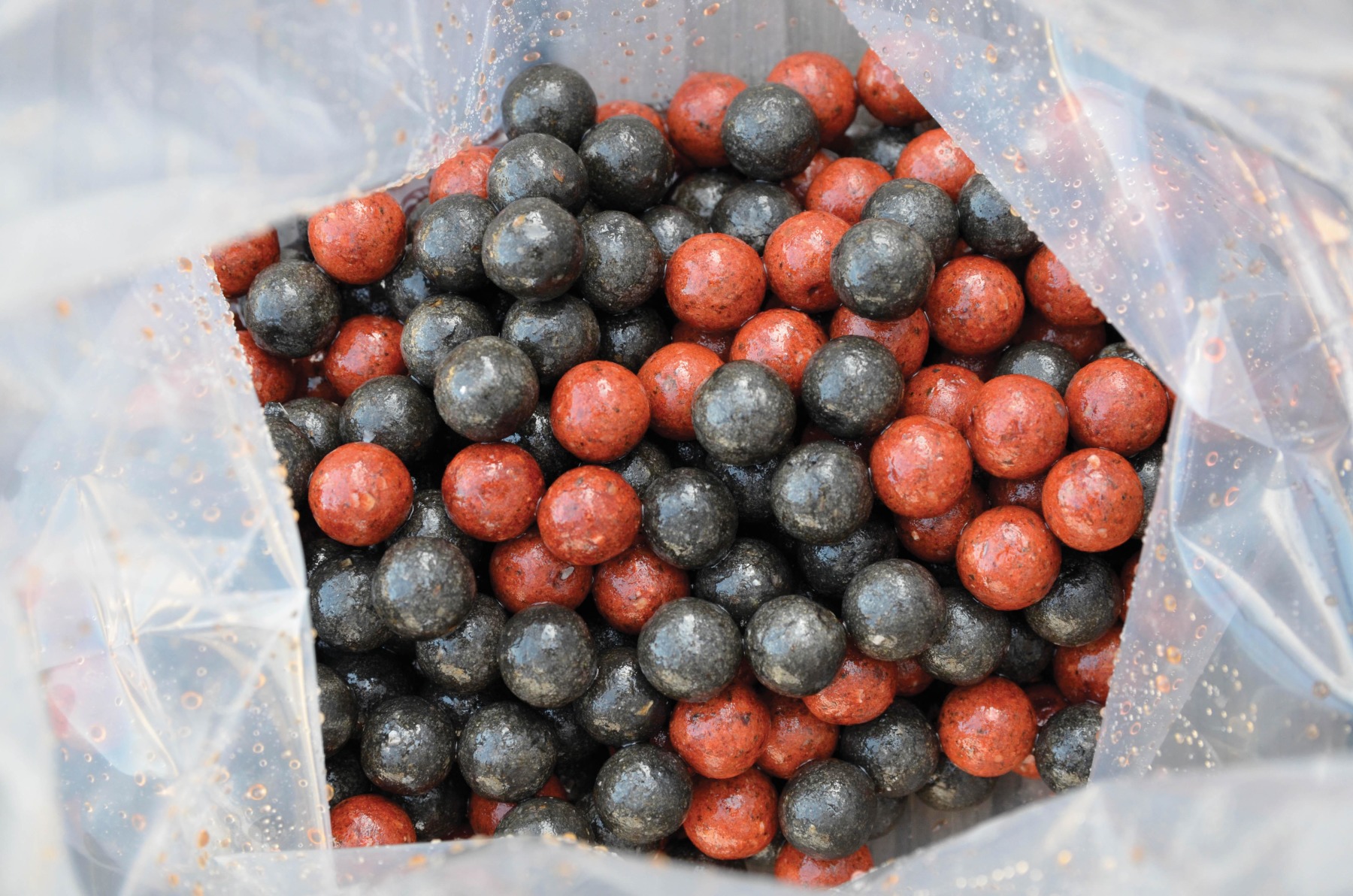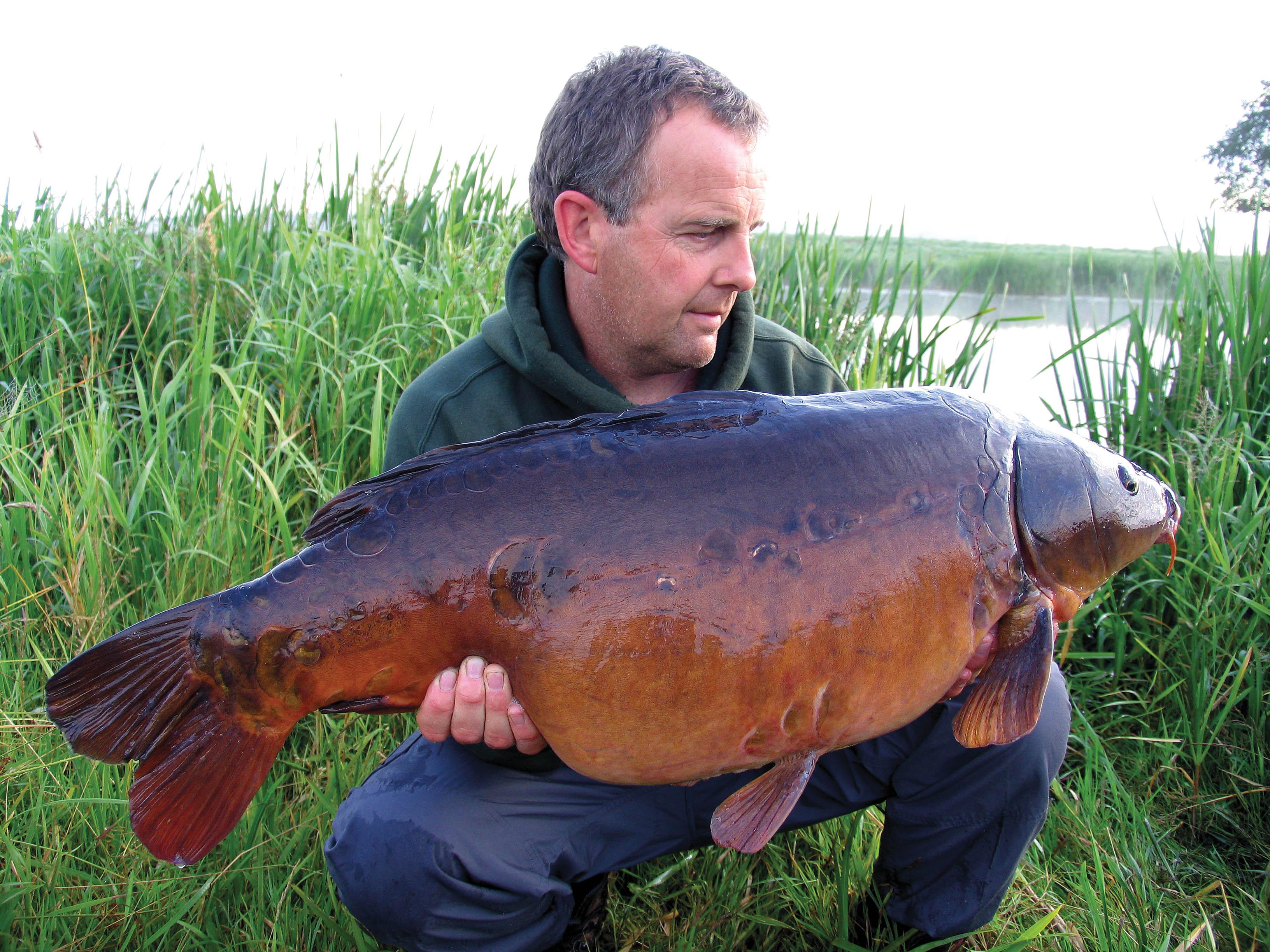Bait According To... Mike Willmott
The driving force behind Essential Baits gives us his thoughts on boilies, balanced hookbaits and much more besides…

Was there a game-changing baiting method or approach that altered everything for you?
“Without a doubt. It happened many years ago at the famous Ashlea Pool in Gloucestershire, where you were able to observe the carps’ behaviour at close quarters in the gin-clear water. I soon learnt that if you didn’t think outside the box, and use baiting methods that were different to others, your success would be very limited indeed. Carp soon become accustomed to the same methods, and if these are used day in, day out, it doesn’t take them long to work out how to avoid being caught. At Ashlea Pool, therefore, I adopted a method I called ‘tactical baiting’, and overnight, it completely turned things around!
“I wrote about tactical baiting in an early British Carp Study Group magazine, and also in my first Carp Life book. It involves applying bait in a way that tricks them, simply because they’re not used to it and it catches them off guard. My first example of using this approach was when I was fishing across to a snaggy margin spot on the opposite bank, about 40yd away. Like most pressured fish, they would spend lots of time in the snags, and they loved it when that bank received the early morning sun’s rays. I baited heavily to the right-hand side of the snags, but presented just a single hookbait on its own to the left-hand side. You could clearly see that the carp would be extremely cautious of the baited area to the right, often gliding over the top, looking or feeling for lines. They would occasionally drop down and gingerly pick up a free offering, but not before waving their pectoral fins back and forth to cause water movement, seeing whether the bait was attached to a rig before circling the snags and re-entering them on the left-hand side.
“This is where my method came into play, because my single hookbait presented all on its own was deemed safe. Then, BANG! The line would tighten and I’d be on the rod in a split second to connect with the fish and steer it away from the snags. Carp have very small brains, but as with any animal, their natural instinct soon teaches them to avoid what they continually encounter and consider dangerous. However, they have only a one-channel thought process. What I’d done with the above tactical-baiting ploy was occupy that thought process, and trick them into thinking the heavily baited area was an unsafe zone, simply because their past experiences had taught them as such. Basically, their brain was so wired into being ultra-cautious of a baited area that the single hookbait presented in the ‘safe’ zone just didn’t register as being dangerous, and from that point on, it was just down to the efficiency of the rig. I’ve used the same method to great effect on numerous occasions since, but its use doesn’t have to be restricted to snaggy areas. It can also be applied to open-water areas, bars, gullies, weedbeds, etc.
“Another method I’ve found absolutely devastating in more recent years is the use of two different boilies alongside each other. By that, I mean mixing baits together to confuse the carp. Don’t forget what I said earlier about their one-channel thought process. Anything outside the box, so to speak, will often confuse or trick them. If the two baits have contrasting colours, better still, and preferably different attractor packages, too. By far, the best two baits I’ve used for this tandem approach are Shellfish B5 and Black Snail. Both are produced by Essential Baits and both are high-quality foodbaits, which is important because you need the baits to compete with each other, especially if the venue has plenty of natural food, or is being baited by other anglers. Incidentally, the B5 is red and the Black Snail is black; hence the contrast.
“Using these two baits together has caught me countless carp from different venues, and often at times when very few others are being caught, which is always the sign of a successful method and approach. It also caught me some very rare carp when I used it at Frampton, including a rather elusive forty which has seen the bank just twice in 12 years!
“Probably the most memorable time it paid heavy dividends was in 2015, when I was on the Stoneacre syndicate in Oxfordshire. I arrived for only my second session on the vast, difficult pit, and nothing had been out for days. I applied what I then called my ‘red and black’ method, dropping just six B5 boilies and six Black Snail boilies around my B5 hookbait. At first light the following morning, the lake deadlock was broken when I caught one of the most sought-after fish in the lake, none other than the awesome No 9 Bus at 42lb. It was its first capture for 18 months, yet low and behold, I caught the same fish on my very first session the following season, and it hadn’t been caught in between! I think the old warrior liked me, or more likely, the bait.”
Have your thoughts and opinions on the appropriate size of free offerings changed over the years? Do you prefer to use a bed of 10mm baits, for example, or are you happy with 18mm?
“I will keep this answer short, because there is absolutely no doubt in my mind that using different-sized baits in any baiting situation offers you an edge. I thought that well over 30 years ago, and I’ve seen nothing to change my views since. However, I will add that this will be the case at times when the carp are generally showing greater caution, often due to angling pressure, and each venue will be different. Most of the time, a good old bed of 16mm boilies will suffice when they’re foraging around for more tasty morsels, but when the going gets tough, the thinkers get going!”


Do you introduce feed on a little-and-often basis, or prefer to bait up and then leave the swim undisturbed?
“In a perfect world (which doesn’t exist), who wouldn’t want to bait up regularly and leave the swim undisturbed? However, very rarely can you do that these days, and being able to get back in a swim after having some success there is even rarer. That said, there are still some good syndicate venues out there that aren’t too pressured, where an amount of good bankside etiquette exists, and in such circumstances, if you can visit and apply bait between sessions, it will no doubt be beneficial.
“I expect the vast majority of anglers today just haven’t got the time or the resources to be able to bait regularly, or live too far from their venue to make it viable. I have found myself in this situation many times over the years, which is why my ethos for developing baits has always been based upon creating a food source which will be accepted, right from the off. I firmly believe that a good-quality, nutritional foodbait, coupled with a blend of feed stimulants (attractor package), will trigger a feeding response straight away, and will minimise any necessity to apply bait prior to fishing. Most of the carp in our lakes these days have been reared on dedicated fish farms, and fed a diet of good-quality pellets or boilies, so they instantly recognise what’s being offered, but the more acceptable your free offerings are in terms of palatability and nutrition, the better your chances of success, in both the short- and long-term.”
By using large quantities of bait, perhaps in the extreme, have you or someone you know outfished the rest of the anglers on a lake?
“I’m in the privileged position of running a bait company, so over the years I’ve had plenty of opportunities to introduce large quantities of bait. However, I’ve always let the fish dictate how much I’ve used, and would never saturate a venue just because I can. I can, though, recall quite a few situations when I just physically couldn’t put in enough bait, and the results just got better and better. One was on a local river I was baiting with my son, Lee. They were ravenous, and there was no need to mix sizes and shapes due to them being shy feeders. We were just filling it in, night after night, with 20mm B5 boilies in the run-up to the start of the season, sometimes putting in 10kg on dusk, several nights in a row. We absolutely caned the place once we started fishing. We had all the known big fish within a nine-mile stretch, but we felt we never could put enough bait in! One of the fish I caught, a 36lb mirror, had my hook lodged about 10 inches back in its throat. It really worried me for a short while, but we managed to extract it in the end. This was a clear indication of how hard they were feeding, and how they had thrown caution to the wind, completely, in their quest to gorge all the bait.
“This situation is very rare, but I’ve experienced similar experiences at Frampton, particularly when they’ve got back on the feed in the spring, following a long winter. I’ve also seen baiting teams reap benefits and catch large numbers of fish by using a good-quality bait. In fact, it was on the aforementioned lake, Frampton, where we once worked out some statistics. About 10 members were using the B5, which represented about 25 per cent of the syndicate at the time. The fish had obviously switched on to the bait, because over a period of about 3 years, it accounted for at least 80 per cent of all the fish caught, including something like 34 of the 39 captures of fish over 40lb. Some baits have the ability to do that, but they are generally few and far between.
“Some venues just don’t respond to big beds of bait, and I remember when fishing for the Black Mirror on Colnemere some years ago, seeing vast numbers of boilies rotting on the lakebed. The venue was absolutely heaving with natural food, and if you use boilies on a venue like that, you really do need to use one which competes with their natural food larder, especially when it’s a venue with a very low stock and the competition for food just isn’t there. That’s why I never baited that place heavily, and just used enough for what was in front of me, opting for the one-bite-at-a-time approach, because less is sometimes more. That was a classic example of what I mentioned earlier. Whilst I had the opportunity to fill it in, I would never saturate a venue just because I can.”
Do you believe that balancing hookbaits is unnecessary, or something we can overdo, possibly making them behave unnaturally as a result?
“I think balancing hookbaits is very important on venues that are heavily pressured, where the carp scrutinise every rig—and believe me, they do. But at the same time, I do feel that lots of anglers try to get them too critically balanced, when all you need to do is negate the weight of the hook, so the hookbait behaves more like the surrounding free offerings. By far, the rigs I’ve seen carp repeatedly reject most easily, time and time again, are those that incorporate critically balanced hookbaits. When the carp move above them and into a feeding position, they will create water displacement, often from their pectoral fins which are moving back and forth. When this happens, you can be sure that your critically balanced hookbait will be spinning around like it’s tethered on a leash. Oh, hang on a minute, it is. It’s your rig, and it’s attached to a big lump of lead! Believe me, from experience, this instantly spells danger to the carp. They will generally avoid it at all costs, but will also clear up all your free offerings at the same time.
“One of the most common complaints I get from customers who have completely overlooked the concept of balancing hookbaits goes like this: ‘Mike, I’ve just got some of your wafters, but they don’t float, they sink!’
“From what I can gather, they think they should float, but after attaching, say, a size 6 wide gape hook, they will gently fall through the water column. Now, that’s what I call a critically balanced hookbait, and in my experience, from a carp’s point of view, they stand out like a turd in a punchbowl!
“Generally, I try to explain that the wafters and balanced hookbaits we produce are designed to sink, but they have enough cork dust within them to negate the weight of the hook. Therefore, in theory, they should behave exactly like the free offerings. I will hold my hands up and accept that the word ‘wafter’ may be a bit misleading, but we couldn’t fit ‘Wafters, but not critically balanced’ on the label! So, in short, they are more buoyant than your free offerings, but once your hook and rig are attached, they should behave very similarly.”

What are your thoughts on refreezing boilies?
“I’m very reluctant to refreeze boilies that have high nutritional values, particularly those with a good fishmeal content. When it comes to cheap and cheerful boilies, though, generally vegetable- or cereal-based baits with little or no nutritional value, I don’t see it as a big problem. It’s a bit like the foods we eat. We wouldn’t refreeze meat as a rule, yet we do other foods that are lower down the protein chain.
“That’s why I much prefer to use and produce boilies of a much higher food value, because they have so much more going for them, both in terms of nutrition and attraction. Don’t forget, carp have the ability to recognise and detect amino acids prior to consumption, which, in short, renders such baits far more effective, in my experience. Furthermore, with such baits you will often see the enzymes start to work after a couple of days, no matter how hard you try to keep them cool and out of direct sunlight. This is a chain reaction with certain ingredients within the bait. It will often cause a whitish ‘bloom’ to develop on the outside of the boilie, and believe me, they can be extremely effective at this point.”
Also, are you one for using boilies straight from the freezer, or do you prefer to let them thaw out, perhaps glazing them with a liquid?
“This is completely down to the circumstances in which you are fishing. For most of my longer sessions, I have no problem using boilies straight from the freezer, once they’ve thawed. However, there is no doubt that the addition of a boilie glug or liquid food increases short-term attraction. Such liquids, therefore, can be very useful on shorter sessions or the occasional overnighter. I do feel that liquids are an important part of our armoury these days, for a number of reasons. They are ideal for pepping up hookbaits, should you want to give them an added boost. You can also add them to chopped or crumbed baits to really get the attraction oozing out of them, and you can add them to particles, pellets, spod mixes and suchlike.”
It’s an age-old question, but with years of experience on your side, do you think alien smells can taint or affect our bait, or is that just a load of rubbish? These might come from anglers smoking, filling up with petrol en route, or perhaps using a hand sanitiser, which in this day and age, everyone tends to?
“I can answer this one very quickly: avoid doing so at all costs! Why would anyone want to ruin a good bait with molecules from petrol, diesel or tobacco? Each to their own, but for the sake of a quick, 30-second splash in the margins, I wouldn’t take the chance.”
Want more carp fishing content? Watch videos on our CARPologyTV channel 𝗛𝗲𝗿𝗲 ➡️ http://bit.ly/3tKMIup



